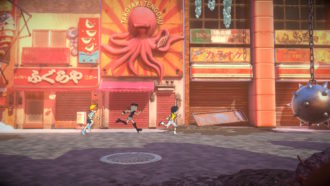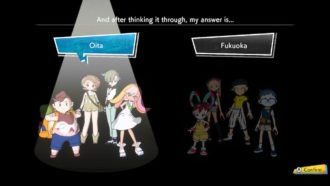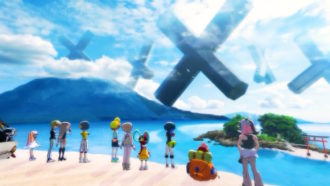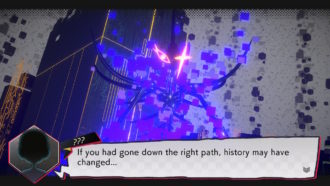Platform:
Nintendo Switch
Released:
May 28, 2021
Publisher:
NIS America
Developer:
IzanagiGames
World’s End Club first released on iOS last year. If you’re surprised to hear that, don’t be – we hadn’t heard one peep about the game until it was first announced to be coming to the Nintendo Switch in 2021. Set in an alternate 1990s Japan, the game follows 12 grade-schoolers as they awaken after an unknown time asleep, made to play a life-threaten game against each other, then make the perilous journey from Japan’s West coat to Tokyo: a good 1200km. As they go, the self-proclaimed “Go-Getters Club” realise that the Japan they knew has been changed beyond their wildest imaginings.
This melodramatic story comes to us from Kotaro Uchikoshi and Kazutaka Kodaka, the creative minds behind the Danganronpa and Zero Escape series.. Both are known for their dark thriller storylines and crazy plot twists, and I was hoping their combined experience would make for yet another amazing experience. But not only is World’s End Club’ writing weaker, but it’s bogged down in tedious and clunky platforming.
With so much of the game’s promotional material name-dropping Danganronpa and Zero Escape, it’s clear that World’s End Club is trying to be like those games. And you can see that come through in a lot of ways: its art style and UI is very reminiscent of Danganronpa, and it’s certainly got its fair share of crazy plot twists. There are various branching paths for the player to choose between, and the clues you find will differ depending on your choices. You’ll need to play through multiple routes to get all the clues you need to unlock the true ending of the game, in a twist similar to the one seen in Zero Escape.

That’s not to say that World’s End Club doesn’t have ideas of its own. Cutscenes often have a cool comic-style progression to them, and its art direction is distinctive enough from other anime-inspired games to make it stand out. The initial premise is engaging as well; so much so that in the beginning, although I was already starting to get the idea that the gameplay wouldn’t do much to impress, I held hope that the story would be enough to make it worth it. But as the game progressed, it became clear that World’s End Club just doesn’t have the writing chops to pull it off.
“World’s End Club just doesn’t have the writing chops to pull it off.”
This is due to a combination of things. The members of the Go-Getters Club are quite likable and charming, albeit are a bit too simple in their characterisations. They mostly avoid falling into annoying archetypes, with the notable exception of the token overweight kid who always talks about food. The theme of working together came on a bit strong, but that’s not a bad thing.
Despite liking all 12 members of the Go-Getters Club, they’re written in a way you’d expect from a kid’s show, with obvious motivations and not a lot of depth. And in a story that has as many unlikely plot twists as this, it really characters with more depth to react to them.
As can be expected of the creative minds behind the Danganronpa and Zero Escape series, World’s End Club is chock full of crazy twists and turns. But here, it’s just not very convincing. Plot twists are introduced and accepted by the characters immediately without a hint of incredulity, new ideas are introduced without proper foreshadowing or explanation, and the kids can seemingly hack computer programs and pilot helicopters without issue. I’m a fan of crazy plot twists: I’m a Danganronpa fan, after all. But when the game doesn’t have the writing chops to pull it off, these twists just start to feel derivative.
A bumpy ride
The game is separated into Story segments, Act segments, and Camp segments. Story segments are, as you might expect, where most of the dialogue and plot progression takes place. The only aspect you might call gameplay is when protagonist Reycho is tasked to choose which town to head to next. Camp segments are places after every major plot point, and are a nice break in the story where you get a chance to talk to each member of the Go-Getters club to see what they make of recent events. If the game were comprised of just these two segments, it would be getting a very different score. It still wouldn’t be getting a great one, but nothing in the Story or Camp segments negatively impact the game as much as the Act segments.
The Act segments are 2D platforming levels with mild puzzle-solving and action elements. It’s so painfully basic, though. The majority of levels will consist of sliding boxes around onto floor switches, jumping over platforms, and avoiding enemies in your way. Each kid has their own special ability, which can include breathing fire, throwing objects, turning to iron, and more, but even this doesn’t manage to be more than mildly interesting. Since the game picks which kid you’ll control at any one time, it’s always obvious which ability you’ll need to use during each level and it’s never a challenge.
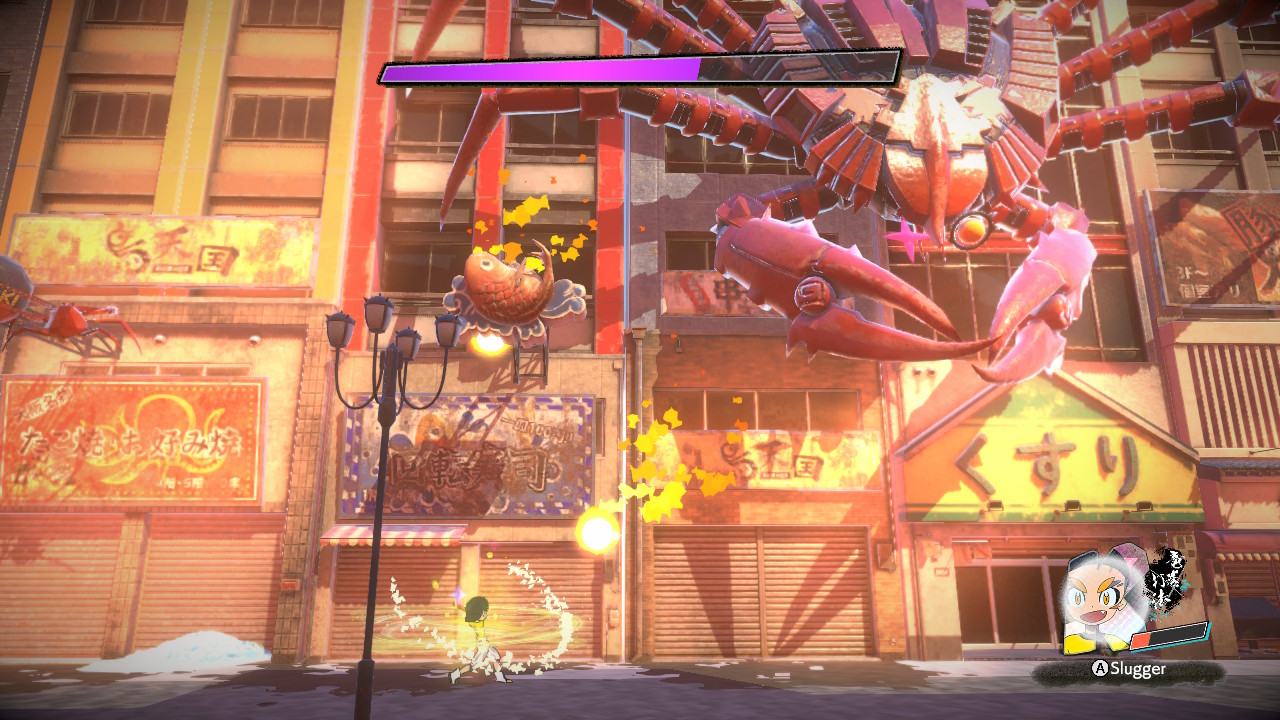
The platforming and so-called action are woeful. Each kid controls exactly like each other, with the exception of their one unique ability. Jump arcs are clumsy and don’t feel right, and hit detection is also iffy. The kids don’t have a health bar – one hit, and you’re out, which means that the kids are one-hit KO’d by anything from a medium-sized snowball to standing slightly too close to the dust cloud from an enemy’s attack.
After a while, all the constant Game Over screens will make you wonder what the hell you’re doing this for. The only good quality these levels have is that they are generally short, easy, and fewer than Story sections. Boss battles, as cool as some of the boss designs are, fair no better.
I appreciated a lot of what World’s End club tried to offer. But it was hard to enjoy the environment design, the nice illustrations, and the heartwarming characters in the face of such disappointing gameplay and a story that doesn’t give its plot twists the time they need to settle.
4
Mediocre
Positive:
- Heartwarming characters
- Some interesting narrative plot threads
Negative:
- Platforming is clunky, uninteresting, and frustrating
- Plot twists just for the sake of it
- Characters are cute but one-note
World’s End Club wanted to be like Danganronpa or Zero Escape, but it doesn’t measure up to either. This game has a pretty cool story sandwiched between aggressively average platforming segments that wouldn’t stand up to snuff ten years ago. It has a cool art direction and likeable characters, but the writing itself is not masterful enough to make the unconvincing plot twists work, nor to make up for the boring and repetitive gameplay.
